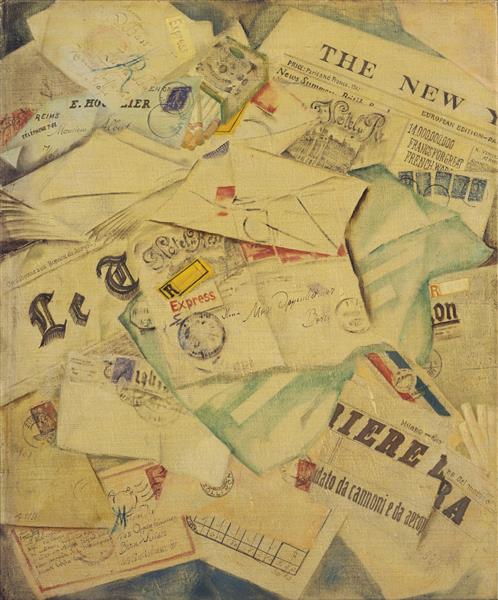Description
The work "World War - 1916" by Max Oppenheimer stands as a powerful visual testimony of horrors and the desolation of the war. Oppenheimer, an outstanding figure in the expressionist movement, achieves in this encapsular painting the human suffering and devastation that characterize the First World War. The image, which seems to emerge from an emotional abyss, not only reflects the historical context in which it was created, but also enters the collective psyche of a Europe torn by war.
When contemplating "World War", the viewer is immediately attracted to its composition. Oppenheimer uses an organized grouping of human figures that, although imposing in their presence, seem defeated by the weight of their own existence. The bodies, mostly disproportionate and distorted, evoke a feeling of anguish and despair, as if the same act of survival has become an unbearable challenge. The figures, which seem to merge with each other, suggest the loss of individual identity in the midst of chaos. Such a approach could be interpreted as a criticism of the dehumanization inherent in the war, an issue that resonates deeply in the art of the time.
The use of color in this work is particularly revealing. Oppenheimer chooses a palette dominated by dark and terrible tones, which contribute to a heavy atmosphere loaded with melancholy. The nuances of gray, black and red combine to create a dramatic effect that suggests both physical destruction and emotional wound. Reds can be interpreted not only as spilled blood but also as anger and suffering that flow as underground currents throughout the composition. This color use is not merely decorative; It works as an expression vehicle that intensifies the emotional impact of the work.
Although the painting does not incorporate detailed narrative elements, the figures seem to represent an amalgam of soldiers and civilians, blurring the borders between them. This approach universalizes the experience of war, referring to its indiscriminate reach that affects both warriors in the front and those who suffer from home. The facial expressions and the positions of the figures, loaded with hopelessness, frustration and chaos, are a powerful reminder of the human tragedy that develops in the background of the war.
Oppenheimer, like many artists of his time, feels obliged to respond to the horrors that presence, and his work aligns with expressionism, a movement that seeks to convey subjective and emotional experiences rather than representing reality precisely. This work can be considered as a parallel to other artistic representations of the war, such as those of Otto Dix or George Grosz, who also enter the deep psychological scars left by the conflict. However, Oppenheimer provides a unique approach that emphasizes the emotional connection between the figures represented, turning the paint into a powerful cry that resonates beyond its time.
In conclusion, "World War - 1916" is not just a painting; It is an invocation to the collective memory of a tormented Europe, a portrait that returns to humanity its face torn by war. Through its composition, its dramatic use of color and its focus on human experience, Oppenheimer forces us to confront not only the reality of its time, but also the timelessness of human suffering induced by war. Her work remains a symbol of resistance and reflection in a world that, unfortunately, remains vulnerable to the same horrors that she documes.
KUADROS ©, a famous paint on your wall.
Hand-made oil painting reproductions, with the quality of professional artists and the distinctive seal of KUADROS ©.
Art reproduction service with satisfaction guarantee. If you are not completely satisfied with the replica of your painting, we refund your money 100%.

